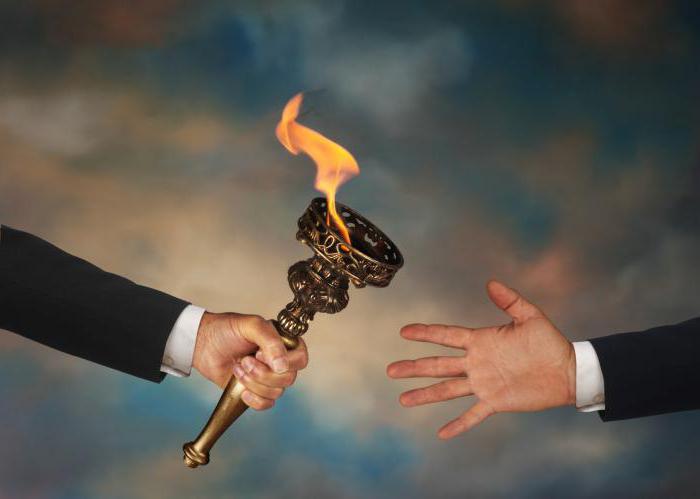People who are naturally capable of leading always attract attention. They have supporters and opponents, but these individuals never go unnoticed. A political leader is the head of an organization, movement, party, structure, state. He is not just someone else’s boss. This is the one who sees the situation, and pushes his wards forward. Therefore, the words “leadership” and “leadership” have a different meaning.
Leader and Leader
What is the difference between two seemingly very similar concepts? Leadership is the power to make decisions. This feature is not always aimed at evoking authority among the wards. The qualities of a leader can be inherent in a person who does not occupy a leadership position. This person is always respected by others. Such a leader is called informal.
Best of all, political activity succeeds for people who simultaneously hold leadership positions and are authoritative leaders. A number of qualities testify to the ability to manage. Among them are the following:
- Intelligence.
- Organizational skills.
- Intuition.
- The ability to please the public.
- Willingness to take responsibility.

Political leader through the eyes of Machiavelli
In the work "Sovereign" Niccolo Machiavelli (Italian philosopher), the requirements for a person who wants to become a successful politician were described in detail. The qualities of a leader in his view look like this:
- Avoid hate.
- Position people, creating trust.
- To create the appearance of virtue before the people, regardless of actions.
- Act fast and tough if the situation requires it.
- Change management style, guided by the situation.
What are the leaders
In relation to subordinates, managers are divided into authoritarian and democratic. Types of political leadership are class, party, and nationwide. Modern political science distinguishes several collective types. These include the following leaders:
- "Standard bearer". It has a peculiar vision and perception of reality. He is also interested in a dream, an ideal that can inspire a large number of people.
- "Servant". He is guided by the needs and requirements of his supporters. And his actions are carried out on behalf of voters.
- "Dealer". This type is characterized by the ability to attractively present their ideas. He knows how to convince people that his thoughts and suggestions are more attractive than others.
- "Fireman" acts depending on the situation. He deals with the biggest problems that require immediate action.

Moreover, the types of political leadership often possess the property of combining these qualities in different proportions. In pure form, these characteristics are usually not found.
Charismatic leader
Charisma is characteristic of leaders who are capable of captivating and inspiring. In this case, we can say that a person is gifted. The charismatic leader in the eyes of others looks exclusively and infallibly. It is as if endowed with some kind of supernatural powers.
People perceive it with reverence and devotion. That is, such a person is a leader who is blindly believed and followed. Moreover, such a belief is not always associated with the right decisions.His words are perceived and remembered, because it was this person who expressed them. The charismatic type of leadership has the ability to unite followers, despite the danger.
At the same time, such a person is not easily given a solution to current affairs. In addition, there are many examples in history of the transformation of charismatic leaders into dictators.

Democratic leader
The democratic type of leadership, as most researchers believe, is most preferred. Personalities of this type are respected and intelligent. They are tactful and objective. These qualities are manifested in communication with group members. But such a leader, in order to make a decision, needs a lot more time than a follower of an authoritarian style. Such a leader listens to the opinion of colleagues, tries to attract people to the formation of decisions. He may not agree with the opinion of subordinates and as a result act in his own way. But such a leader finds it interesting to listen to the opinions of the wards. The fact is that here he is inclined to the opportunity to see some new solution that can become a fresh trend.
He has nothing against the fact that “fresh air” appeared in the organization. Because constant attitudes tend to become obsolete. Such a leader is able to form new trends based on the opinions of the wards.
Authoritarian leader
Adherents of an authoritarian style tend to spend a lot of time on instruction. For this type of leadership, it’s common to tell followers exactly what, how, and when to do it. An authoritarian type of leadership implies a number of followers to whom they extend their power. At the same time, such leaders do not tend to listen to someone else's advice or opinion. All decisions in an organization or structure are made by only one person. This person does not encourage others to participate in the discussion of issues, to express any thoughts and wishes.

Types of leadership suggest that such a person introduces into his ward structure a number of attitudes that require unconditional submission. It is the exact opposite of the behavior style discussed above. It is strictly forbidden to ignore the set of rules proposed by him. All those who disobey are threatened with a certain punishment. To argue with such a person is also undesirable. He perfectly knows that the boss is always right, and demands that employees have a strict faith in this attitude.
Principle of non-intervention
Also interesting is the leader, in whose actions the principle of non-interference is traced. This style is more progressive than democratic. This leader allows subordinates to make decisions freely. Also, wards have complete freedom in completing tasks that are not limited to the instructions of the leader.

But all types of leadership suggest that the manager is ultimately responsible for the decisions made. And the principle of non-intervention is no exception. Such a person is not characterized by negligence. He has a clear idea of what his ward really is. Therefore, such a leader perfectly knows what and in what situation should be expected from a subordinate. Its task is to properly distribute responsibilities. After this, you can provide the wards with fairly free conditions, as if only slightly controlling them.
Transformational style
Such a leader is characterized by using his ideas to inspire other people. This personality is characterized by excellent communication skills. That is, such a person quite clearly speaks to the wards. He clearly expresses his thoughts. It’s easy with him, because the team of such a person always knows what he wants.

Types of leadership suggest that it is typical for such a person to transfer his own powers to his wards.He spends a lot of time in communication with his team and receives real pleasure from such pastime. The purpose of such meetings is to raise a collective spirit, to unite people, in each to develop a sense of the importance of being involved in what is happening.
In addition, from such conversations, the leader draws a lot for himself. He understands the thinking of the team, its mood, development trends. Also, this leader is interested in the emotional side of what is happening. If he observes a lack of enthusiasm in anyone, then he tries to develop interest.
Flexibility
It should be noted that all of these types of leadership and leadership are not perfect. Therefore, the most successful person is called the "flexible leader." He is able to combine different types of management guided by the situation. If it is necessary to introduce an authoritarian or democratic style, the flexible leader selects the most suitable option. This contributes to achieving the greatest efficiency. And the need for insight and going beyond the standard framework leads to the choice of a transformational style.

Guided by the proposed specification, it is not difficult to determine the personal style or type of your leader in the workplace. Knowing the basic characteristics, you can develop the necessary qualities in yourself. In this case, you just need to compare the personal characteristics of behavior and types of leadership described in the article.



